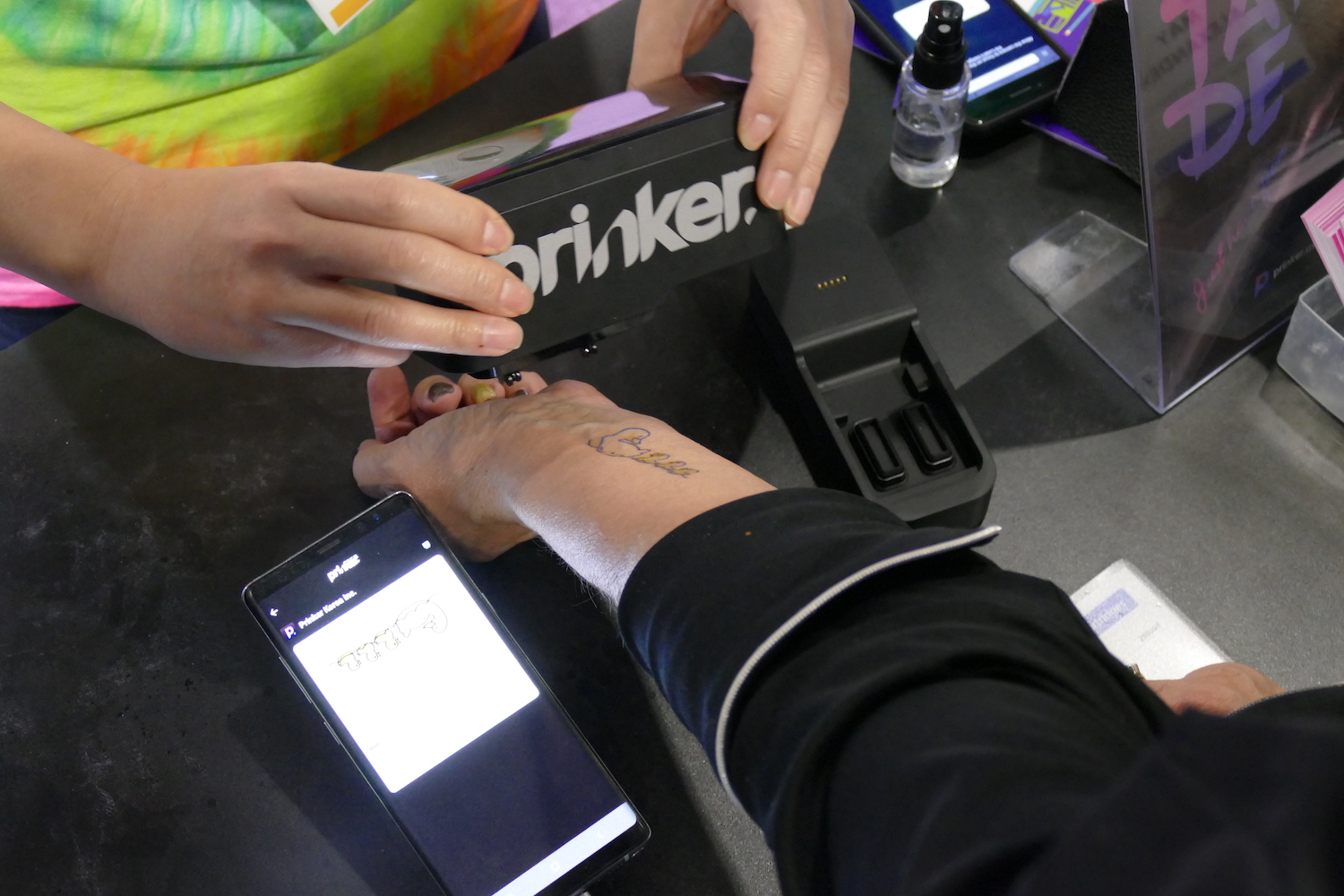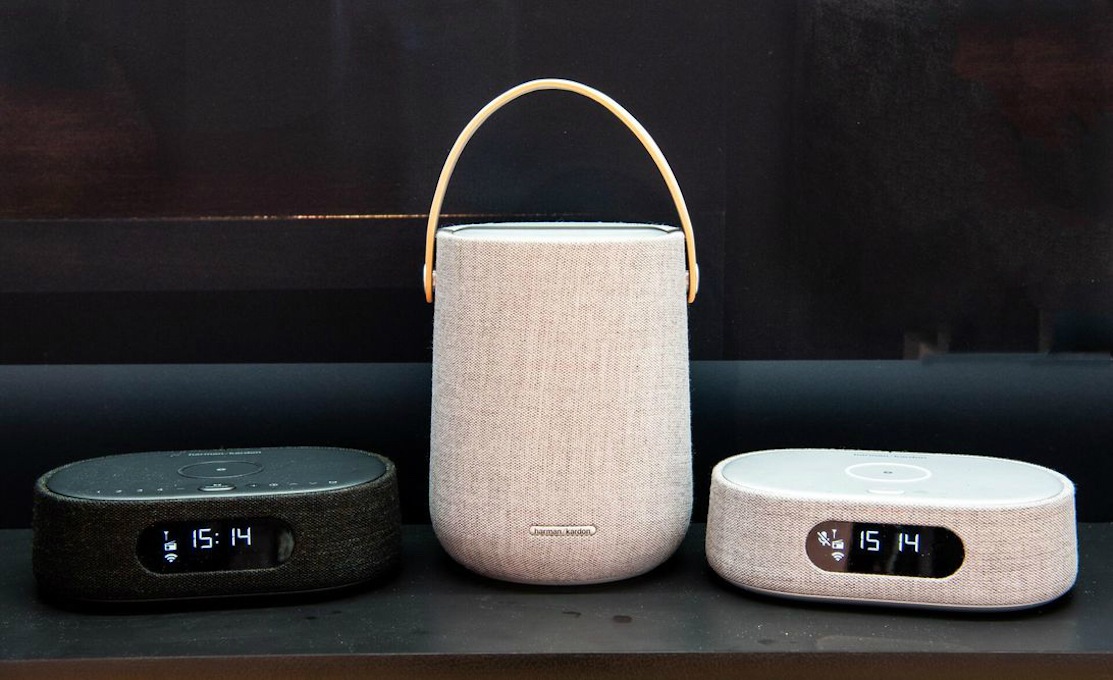That’s a wrap on our CES live blog coverage. We’ll have further analysis, hands-on, and thoughts from our expert staff over the coming days. Thanks for reading and we’ll see you at CES 2021.
- ThinkPad’s latest is an experiment done right
- The ultimate mosquito tracker
- Where was Windows 10X?
- Who needs a separate joystick, anyway?
- What it’s like to hang out with a fake human
- One less thing to worry about when flying your drone
- Let the robot arm win
- Get inked up without the commitment
- Intel’s discrete graphics card
- These speakers have it all
- And the winner is…
- What you missed on Day 3
Below is a recap of our coverage from the Digital Trends staff who were on the ground at CES 2020.
Digital Trends’ Ongoing CES Coverage
- CES Day 1 Recap
- CES Day 2 Recap
- CES Day 3 Recap
- CES Thursday Live Blog ←
- Top Tech of CES 2020 Award Winners
- CES 2020 Schedule
- The weirdest tech we saw at CES 2020
- The best cars of CES 2020
ThinkPad’s latest is an experiment done right
By Brandon Widder
3:24 p.m At CES, foldable devices are no longer a gimmick. Popular devices like the Galaxy Fold have proven the concept is more than just novel, but no manufacturer has truly nailed it with a dual-screen PC despite numerous attempts from Lenovo and others. That is, until ThinkPad stepped up with the X1 Fold.

According to Computing Editor Luke Larsen, the apt-titled X1 Fold is a 2-in-1 that just feels right. It’s basically a 13-inch laptop with foldable display and magnetic keyboard, one that sits snugly between each side of the display when closed and features the same standard build you’d find on most ThinkPad laptops.
You can use the device as a tablet, bend it like a book, or prop it up using the integrated kickstand. It feels as good to use in the hand as it does on the table, and when you combine its versatile construction with its stylus and leather folio cover, you have the first machine that promises a bright future for foldable PCs.
The ultimate mosquito tracker
By Brandon Widder
2:19 p.m. If there’s one thing most people can agree on, it’s that mosquitoes are a nuisance of the highest caliber. Not only is their constant buzzing and bloodsucking extremely annoying, but it promotes the spread of yellow fever, malaria, and other diseases that routinely plague sub-Saharan Africa and third-world countries. Thankfully, one company at CES, Bzigo, has developed a detection device designed to help you eradicate everyone’s least-favorite winged arthropod.

Using an infrared camera and advanced vision algorithm, the Bzigo locates mosquitoes within 26 feet and pinpoints their location via an eye-safe laser when they land. Afterward, the system shoots an alert to your phone over Wi-Fi, notifying you of the intruder. The first-gen device is tentatively slated for release in the next 12 to 14 months, and will likely retail for around $170.
Where was Windows 10X?
By Mathew Katz
1:47 p.m. One of the biggest disappointments of CES was the complete absence of Windows 10X. The new Microsoft operating system, meant to work on dual-screen and touchscreen devices, was conspicuously missing from a show that featured a lot of them. As writer Arif Bacchus asks, what’s the deal?
Our team saw plenty of devices on the show floor that would have benefited from Windows 10X, from Dell’s Ori conceptual device to the Intel “Horseshoe Bend” foldable OLED PC. The only piece of hardware that had any kind of working version of Windows 10X was the ThinkPad X1 fold, which was behind a glass.
All of this means that we couldn’t get our hands on the new software, and we really have no idea how it’s going to work ahead of some of 2020’s biggest hardware releases.
Who needs a separate joystick, anyway?
By Brandon Widder
12:55 p.m. Gaming mice are nothing new in 2020, but one mouse stood out among the rest at CES 2020: The Asus Chakram. It’s got all the bells and whistles you might expect in a modern gaming mouse, including a 15,000 DPI optical sensor and support for both 2.4GHz Wi-Fi and Bluetooth connectivity, as well as a few you might not.

The sleek peripheral features support for Qi wireless charging, for instance, as well as a built-in joystick that doubles as a quad-directional D-Pad. It’s programmable and physically customizable, too, meaning you can swap out said joystick with something that sits more flush with the thumb rest, if taking down fighter jets single-handedly isn’t your thing (no pun intended).
What it’s like to hang out with a fake human
By Allison Matyus
12:43 p.m. Samsung’s artificial humans known as Neons have been a massive hit at CES this week, but we got to hang out with them, and they are so much more than just cool tech to look at.
Neons bring us that much closer to a digital creation that not only understands and interacts with us in a meaningful and relatable way but is also able to share our lives with us.

We walked around the Neon booth, and while at first glance the Neons just appear to be animated people, it’s a whole other level of awe once you understand that they are looking at you and making their own movements through machine learning.
We are definitely excited to see what Neons will bring to the future of A.I.
One less thing to worry about when flying your drone
By Mathew Katz
12:13 p.m. Drones can be expensive, and some of my friends have told me nightmare tales of buying a new one only to fly it into some obstacle and ruin their investment. PowerVision has come up with a solution — kind of — by eliminating one major threat: Water. It’s demoing the new PowerEgg X waterproof drone by flying it back and forth under a man-made waterfall.
This is so dope! @PowerVisionme is showcasing its new waterproof drone at #CES2020 by flying it through a man-made waterfall that cascades down from the ceiling of the convention center. Notice how it maintains elevation! @DigitalTrends pic.twitter.com/KjIrB12LHx
— Drew Prindle (@GonzoTorpedo) January 9, 2020
Along with a resistance to wetness, the PowerEgg X acts as a 4k handheld camera, making it perfect for all kinds of adventures.
Let the robot arm win
By Mathew Katz
11:42 a.m. Our Editor-in-Chief Jeremy Kaplan might never live it down: He lost to a robot arm (and our Top Tech of CES Award winner) in an arm wrestle match for the ages.
.@smashdawg is ready to arm wrestle the winner the prosthetic arm from @BrainCo_Tech, which won our 'Top Tech Award at CES 2020.' #CES2020 pic.twitter.com/T02mcoUKEP
— Digital Trends (@DigitalTrends) January 9, 2020
Get inked up without the commitment
By Allison Matyus
11:07 a.m. If getting a tattoo is too much of a commitment for you, then this tattoo printer could be just what you need for some temporary ink.
Prinker debuted a tattoo printer at CES, and it’s some pretty neat tech. You can customize your tattoo design within the app, then place the small printer on whatever area of your body and viola — you have got yourself a tattoo for the next day or so. The Food and Drug Administration even approves the ink.

It’ll cost you $270, which is about what a real medium-sized tattoo would cost. However, the Prinker comes with enough ink to supply you with about 1,000 tattoos so you can look like a badass even if needles terrify you.
Intel’s discrete graphics card
By Brandon Widder
10:46 a.m. Intel’s CES showcase included everything from A.I.-enhanced tracking to foldable laptops though, its biggest reveal may have happened behind closed doors. On Wednesday, the company gave Digital Trends and a handful of outlets a sneak peek at its long-rumored Xe graphics architecture, specifically its upcoming desktop graphics card, the Intel DG1.

Intel leveraged the processor, which the company ensures us is nowhere near finished, to play the popular free-to-play shooter Waframe. It didn’t blow us away — performance was choppy, even when running at a mild 30 frames per second at 1080p resolution — but Intel reminded us it’s only a “software development vehicle,” meant only to prepare developers for future Xe graphics solutions. In the future, we expect Intel to release more robust, capable pieces of Xe hardware more in line with what AMD and Nvidia currently produce. Until then, we’ll keep our eyes open.
These speakers have it all
By Allison Matyus
9:00 a.m. Harmon Kardon introduced its Citation series speakers that features some pretty impressive audio quality. Among them is the Citation 200, which has specs including a battery with eight hours of playtime and protection against splashes.
The Citation Oasis has an alarm clock (for those who still use those things) and music-streaming capabilities. The Citation Multibeam 700 is a compact soundbar with a color LCD. It uses seven built-in speakers to immerse you in sound completely.

Then there’s the Citation Sub S: A wireless, small subwoofer perfect for anyone’s home theater.
With all of these speakers, you can expect Google Assistant, as well as Chromecast and Apple AirPlay capabilities. Think of all the music streaming possibilities!
And the winner is…
By Allison Matyus
6:43 a.m. We’ve seen lots of groundbreaking new tech the past couple days at CES, but to us, one reigns supreme.
In terms of technology that really could impact people for the better, the BrainCo Dexus takes the cake as this year’s top tech winner.

The prosthetic arm uses a brain-machine interface to allow the wearer to control the arm entirely with their own thoughts, just like a regular arm. We got to see the arm up close, and even shake someone’s hand, and were blown away by how seamlessly the limb was able to move.
Another thing we applaud is its price: $10,000 for a prosthetic arm is much more affordable and accessible to more people who actually need it than the $40,000 that many other prostheses cost.
Bravo, BrainCo!
What you missed on Day 3
By Mathew Katz
Yesterday was when we really got a chance to spend quality time with products and bigwigs from some of tech’s biggest companies.
DT Editor-in-Chief Jeremy Kaplan found out exclusively from Google’s diversity boss that the company has spent the past few years developing a 2,000-person group of “inclusion champions” to make sure all kinds of people are involved in developing Google products. The search giant has had issues with diversity in its products in the past — including a camera that wasn’t rendering everyone’s skin tones correctly — so this is a welcome change.
We also found out what Quibi is (yes, that’s a real company). It’s a streaming service coming April 6 that offers up what it describes as “quick bites” that run for 10 minutes or less. Some big names have signed on for Quibi’s 175 shows, including Chrissy Teigen, Tyra Banks, and Joe Jonas. Quibi’s big gimmick is that you can watch its shows on your phone either vertically or horizontally — it’s built for both.
For a complete roundup of the past few days at CES, check out yesterday’s Day 3 Live Blog, Tuesday’s Day 2 Live Blog and Monday’s Day 1 Live Blog.



